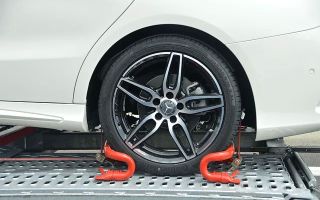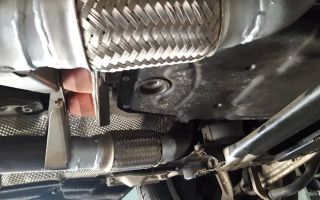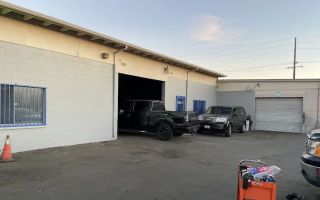What Type of Flat Tires Can Be Repaired? A Complete Guide for Car Owners
- 1. Understanding Flat Tires: Causes and Types
- 2. Common Tire Damage: What Can Be Repaired?
- 3. When to Replace Your Tire Instead of Repairing It
- 4. Real-Life Case: When We Fixed a Flat Tire on the Road
- 5. Professional Help: How Towing Services Can Assist with Tire Issues
- 6. Conclusion: Keep Your Tires in Top Shape to Avoid Breakdown
1. Understanding Flat Tires: Causes and Types
A flat tire can occur for a variety of reasons, and knowing what caused the issue is the first step in determining whether it can be repaired. Flat tires are most commonly caused by punctures, damage from debris, or wear and tear. In my experience, a flat tire usually happens unexpectedly—whether from a sharp object on the road or prolonged use that leads to tire wear.
The most common types of flat tires include:
- Punctures: Caused by sharp objects like nails or glass embedded in the tire.
- Sidewall Damage: A tear or bulge along the side of the tire.
- Valve Stem Damage: If the valve stem gets damaged, it may cause air to leak out.
- Blowouts: Often caused by overinflation, underinflation, or defects in the tire.
Not all flat tires can be repaired. It's important to identify the type of damage before deciding on a repair or replacement.
2. Common Tire Damage: What Can Be Repaired?
When it comes to repairing flat tires, some damage is repairable, and some isn’t. For example, punctures in the tread area of the tire are often repairable, while damage to the sidewall or a blowout usually requires tire replacement. Here's a deeper dive into the types of damage that can typically be repaired:
- Tread Punctures: Punctures in the tread of the tire, usually from nails or other sharp objects, can often be repaired if the puncture is small (less than ¼ inch). This is the most common type of flat tire that can be fixed without needing a new tire.
- Valve Stem Leaks: A leaking valve stem can often be replaced or repaired, preventing the need to replace the entire tire. I’ve had this happen once and was able to quickly fix it with the help of a roadside service provider.
- Small Cuts in the Tread: If the cut is not deep and does not affect the structure of the tire, it might be repaired. However, a larger cut will likely require replacement.
Repairs are typically done with a plug or a patch. I’ve used both methods on small punctures, and they were effective in restoring the tire to good condition.
3. When to Replace Your Tire Instead of Repairing It
Not all flat tires are suitable for repair, and in some cases, the best option is to replace the tire entirely. In my experience, when the damage is severe or affects the structural integrity of the tire, replacement is necessary. Here are some situations where tire replacement is the safest option:
- Sidewall Damage: Damage to the sidewall of the tire is usually irreparable. Sidewall damage compromises the tire's structural integrity, and it is generally unsafe to repair.
- Large Punctures: If the puncture is larger than ¼ inch or is located near the sidewall, repairing the tire may not provide adequate safety.
- Multiple Punctures: If a tire has multiple punctures or repairs, it's time for a replacement. Even if each puncture is small, the overall safety and lifespan of the tire can be compromised.
- Blowouts: If your tire has blown out, it’s often best to replace it. A blowout can lead to severe damage, and the tire may no longer be safe to drive on.
It's important to have a professional assess the tire's damage to determine whether it's safe to repair or if replacement is the only option. A qualified mechanic can provide advice based on the specific condition of your tire.
4. Real-Life Case: How We Fixed a Flat Tire on the Road
Let me share a real-life story about how I once handled a flat tire while driving late at night. I was on a long road trip when I felt the car start to wobble. Pulling over, I discovered that I had a flat tire caused by a sharp piece of debris on the road. Fortunately, I had a roadside assistance service on hand, and they quickly arrived to assess the situation.
The technician identified that the puncture was in the tread area, and it was small enough to repair. After a quick patch, we were back on the road, and the repair lasted until I could get the tire fully inspected at a local garage. This experience reinforced the importance of having roadside assistance for emergency situations like flat tires.
5. Professional Help: How Towing Services Can Assist with Tire Issues
When dealing with flat tires, sometimes it’s best to rely on professional help, especially if you're on the side of the road or in a location where changing the tire is unsafe. Towing services like Rescue & Towing can provide essential assistance, including towing your car to the nearest garage or repairing the tire on-site if possible.
In situations where you’re unable to repair the tire yourself, a professional service can save you time and effort. They have the expertise to handle all types of tire damage and can offer guidance on whether your tire can be repaired or needs to be replaced.
6. Conclusion: Keep Your Tires in Top Shape to Avoid Breakdown
Dealing with flat tires can be frustrating, but knowing what types of tires can be repaired and when to seek professional help makes the process much easier. Regular tire maintenance and understanding the condition of your tires can help you avoid unexpected breakdowns. In my experience, keeping an eye on tire wear and addressing issues like punctures promptly can prevent a flat tire from becoming a major problem.
If you're in need of assistance with a flat tire or any other vehicle-related issues, don't hesitate to contact Rescue & Towing. Their expert team can provide reliable towing and tire repair services, ensuring you get back on the road quickly and safely.























